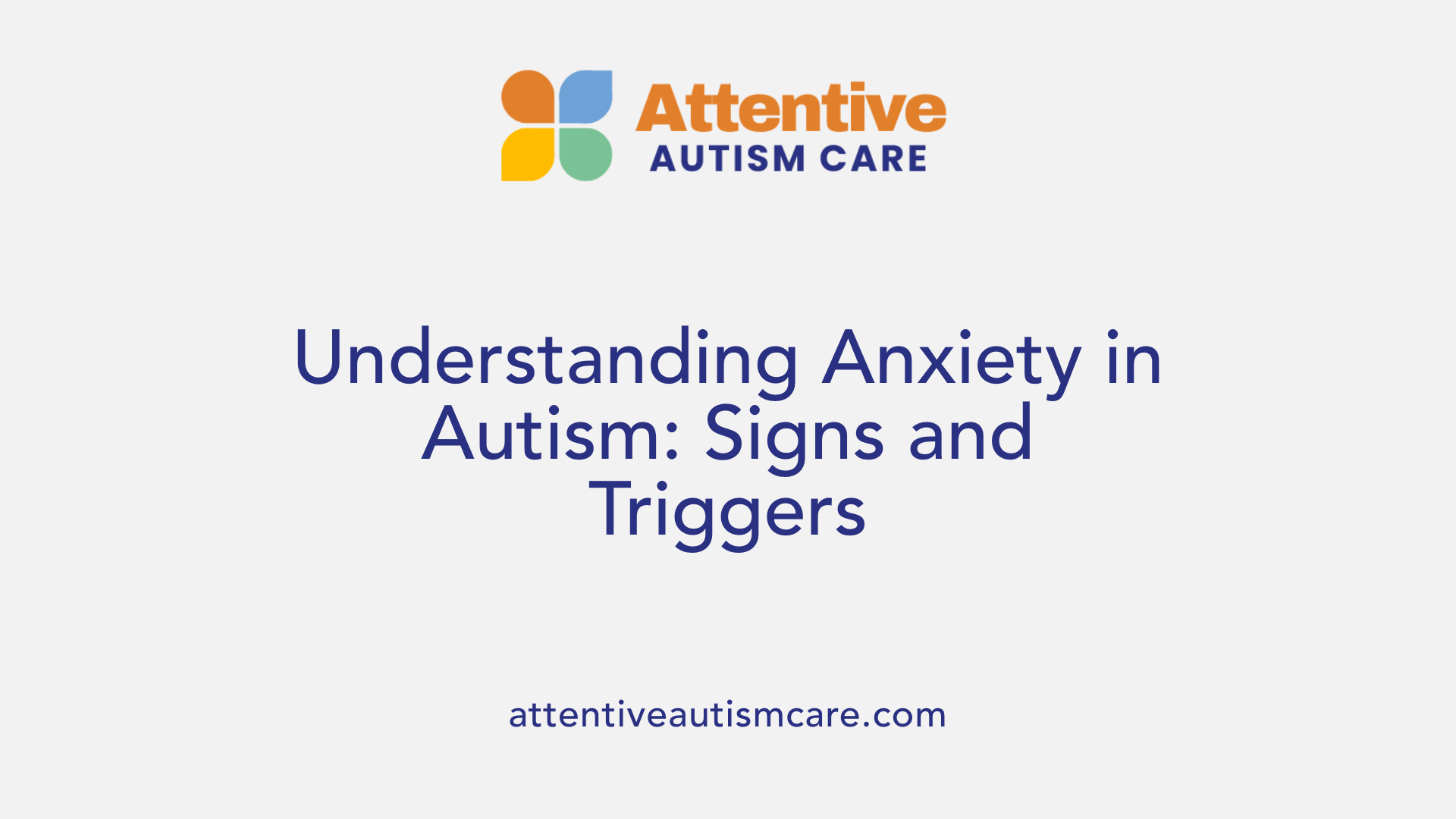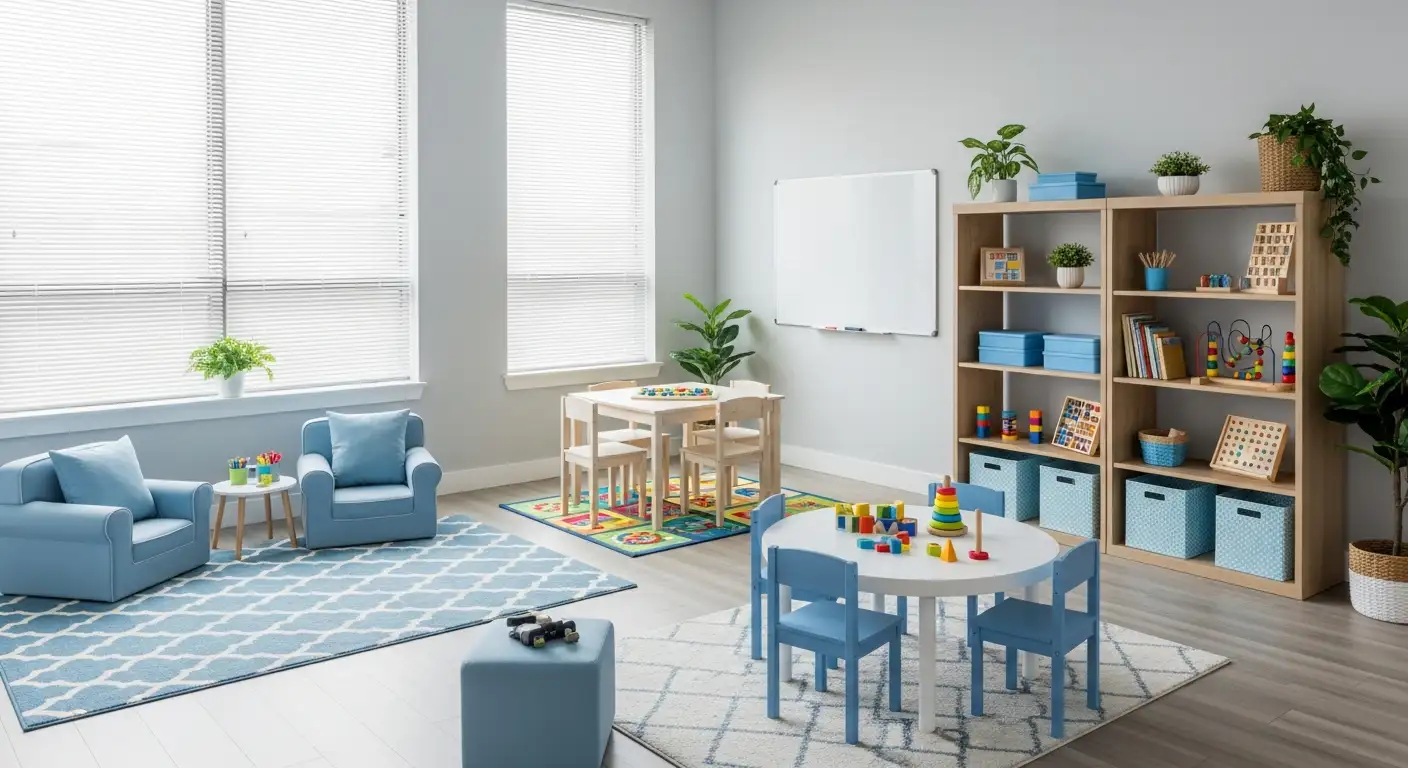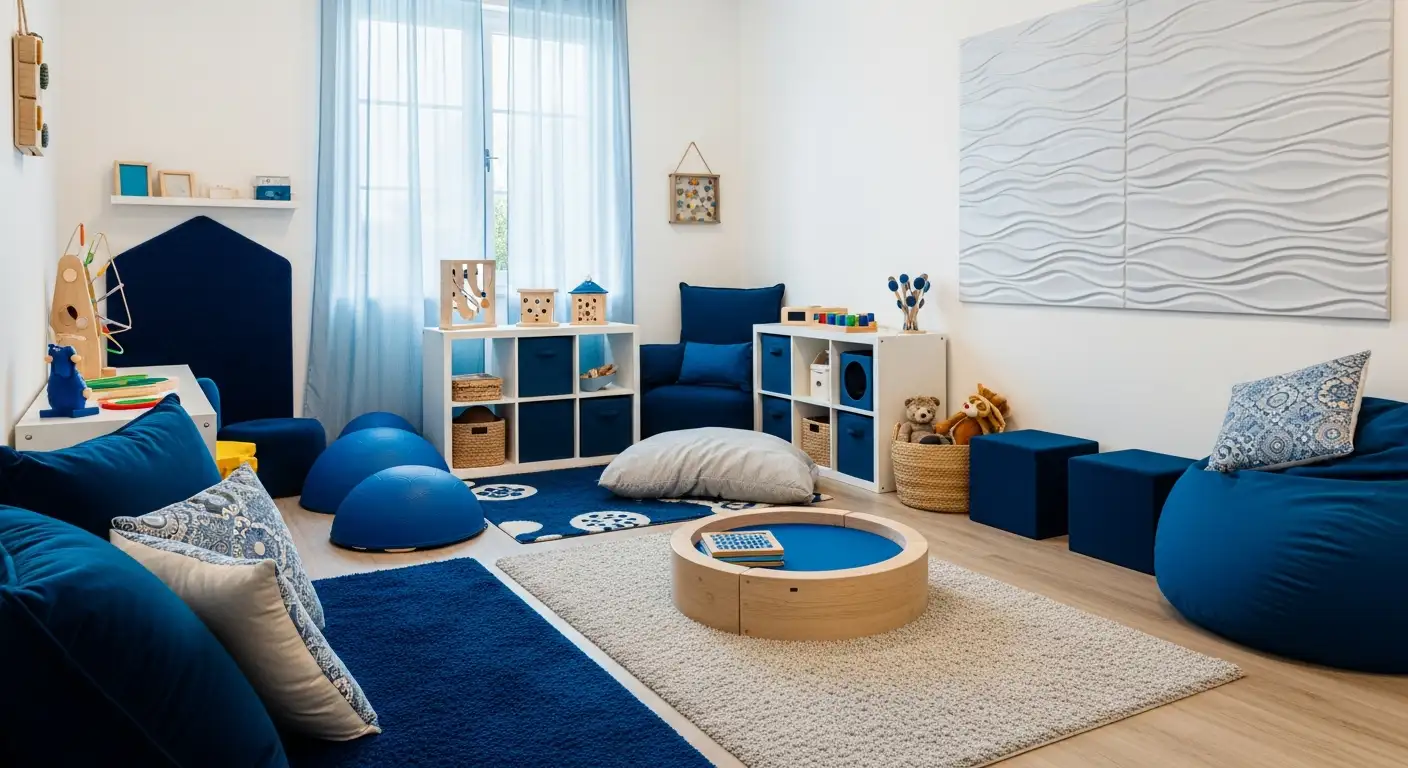How to Support Autistic Individuals in Managing Anxiety
Effective Strategies and Therapies to Alleviate Anxiety in Autism

Understanding Anxiety in Autistic Individuals
Anxiety is a prevalent and often challenging condition affecting a significant portion of autistic individuals. With nearly half of autistic children and adults experiencing clinically significant anxiety disorders, comprehending the unique ways anxiety manifests and is managed in this population is critical. Sensory sensitivities, social communication difficulties, and rigidity in routines frequently trigger anxiety, leading to repetitive behaviors and avoidance that impact daily functioning. This article explores evidence-based therapies, practical strategies, and supports to help autistic individuals manage anxiety and improve their quality of life.
The Nature and Impact of Anxiety in Autism

How prevalent are anxiety disorders in autistic individuals?
Anxiety disorders are highly common among people with autism spectrum disorder (ASD). Research indicates that about 40% of autistic children and up to 50% of autistic adults experience some form of anxiety disorder. Specific phobias rank as the most frequent, followed closely by obsessive-compulsive disorder and social anxiety disorder.
What triggers and symptoms are commonly seen in anxiety affecting autistic people?
Common triggers include sensory sensitivities to noise, light, touch, or smells that can lead to sensory overload, a known anxiety source. Difficulties with social communication and being misunderstood contribute to social anxiety. Changes to routines, unexpected events, and emotional regulation challenges also frequently provoke anxiety.
Symptoms of anxiety manifest as feelings of fear, restlessness, irritability, increased heart rate, muscle tension, trouble concentrating, and changes in appetite or sleep patterns. Behavioral signs include heightened repetitive behaviors, compulsions, avoidance of social interactions, and sensory-seeking or avoidance actions which may serve as self-regulatory strategies.
Why is diagnosing anxiety in autistic individuals challenging?
Diagnosing anxiety can be complicated because some anxiety symptoms overlap with core features of autism—such as repetitive behaviors, reliance on routines, flat affect, and limited social engagement. This overlap can mask or mimic anxiety signs, making clinical distinction difficult without careful evaluation.
What physical and behavioral signs help identify anxiety?
Physical indicators often include racing heartbeat, muscle tension, sweating, and stomachaches. Since autistic individuals might struggle to express internal distress verbally, these outward physical symptoms can be crucial clues. Behaviorally, increased avoidance of social situations, irritability, difficulty with change, and amplified repetitive behaviors may signal anxiety.
How do sensory sensitivities and social challenges impact anxiety?
Heightened sensory sensitivities commonly lead to sensory overload, triggering intense anxiety and distress. Moreover, social challenges such as fear of new social situations and feelings of being misunderstood or rejected intensify anxiety levels. This social stress sometimes results in masking behaviors where autistic individuals hide their traits, further adding to emotional strain.
Understanding these factors is essential for providing tailored support to autistic individuals, recognizing anxiety signs early, and applying appropriate accommodations and interventions to enhance well-being and reduce distress.
Evidence-Based Psychological Approaches to Managing Anxiety

How can cognitive-behavioral therapy support autistic individuals with anxiety?
Cognitive Behavioral Therapy (CBT) is a well-supported psychological treatment tailored for autistic individuals who experience anxiety, particularly those with some verbal abilities. Modified forms of CBT help participants identify the sources of their anxiety and challenge negative thought patterns. Key adaptations include sensory accommodations like quiet, low-stimulation environments and visual supports that align with neurodiverse processing styles.
Exposure therapy, often included in CBT, gradually introduces feared situations in a controlled and supportive way, helping individuals build confidence and reduce avoidance behaviors without overwhelming sensory overload. Mindfulness techniques, such as deep breathing and relaxation exercises, are integrated to help regulate emotions and manage anxiety symptoms.
Can families participate in anxiety management therapies?
Families and caregivers are integral to the success of anxiety treatment in autistic individuals. With guidance from professionals, they learn to apply CBT techniques at home, reinforcing coping skills consistently and in natural contexts. This involvement supports the generalization of strategies beyond therapy sessions, leading to improved anxiety management in daily activities.
Training parents in these approaches equips them to recognize early signs of anxiety and implement timely interventions like sensory breaks or calming routines. Resources such as books and manuals are often provided to facilitate ongoing use of CBT-based methods by families, further enhancing treatment outcomes.
| Approach | Description | Adaptations for Autism |
|---|---|---|
| Cognitive Behavioral Therapy | Identifies and challenges anxious thoughts to reduce anxiety | Sensory accommodations, visual supports, tailored communication |
| Exposure Therapy | Gradual and controlled exposure to feared stimuli to build tolerance | Adjusted pace, sensory-friendly settings, avoidance of overwhelming stimuli |
| Mindfulness & Relaxation | Techniques to calm physiological anxiety responses and improve emotional regulation | Incorporation of deep breathing, sensory breaks, and predictable routines |
| Family Involvement | Training families in therapeutic techniques to support anxiety management | Guidance for recognizing symptoms, consistent reinforcement at home |
Applied Behavior Analysis and Its Role in Supporting Anxiety Management

What is autism behavior therapy?
Autism behavior therapy primarily refers to Applied Behavior Analysis (ABA), an evidence-based treatment designed to help individuals with Autism Spectrum Disorder (ASD). This approach focuses on promoting desirable behaviors while reducing harmful or undesired ones. ABA operates by analyzing the environment and events preceding and following behaviors, utilizing techniques such as positive reinforcement, prompting, and shaping. It aims to teach essential skills related to communication, social interaction, and daily living, tailored to the unique needs of each individual. ABA therapy can be implemented in various settings, including clinics, homes, and schools.
Who provides ABA and what qualifications do they have?
ABA therapy is delivered by qualified professionals, including Board Certified Behavior Analysts (BCBAs), Licensed Behavior Analysts, and Registered Behavior Technicians (RBTs). These experts typically possess degrees in psychology, education, or related fields and have completed rigorous certification processes. Their training involves supervised practical experience and adherence to ethical standards that ensure high-quality and effective therapy delivery.
What are common techniques used in ABA relevant to anxiety?
Among ABA's many techniques, two are especially notable: Discrete Trial Training (DTT) and pivotal response training (PRT). DTT involves a step-by-step, structured teaching method with clear instructions and rewards for correct responses, which helps build foundational skills and reduce anxiety caused by uncertainty. PRT is conducted in natural settings to promote social and communication skills, focusing on pivotal areas of development such as motivation and self-management, which are essential for managing anxiety symptoms. Additionally, ABA uses positive reinforcement, behavior modeling, and visual supports to help individuals learn coping strategies and regulate anxious behaviors.
What are the benefits and goals of ABA for individuals with autism?
ABA aims to enhance quality of life by improving communication, social skills, and independence. It is particularly effective when started early and delivered intensively. For individuals experiencing anxiety, ABA can promote strategies to identify and cope with triggers, reduce avoidance, and build confidence in social situations. The therapy’s structured approach helps decrease unpredictable scenarios, a common source of stress for autistic individuals.
How is progress tracked and measured in ABA therapy?
ABA relies on data-driven progress monitoring. Therapists collect detailed, ongoing data about behavior frequency, duration, and intensity. This measurement allows for precise evaluation of treatment effectiveness and timely adjustments to intervention plans. Tracking progress encourages objective decision-making, ensuring that therapy remains responsive to the individual's development and anxiety management needs.
Sensory Strategies and Environmental Accommodations for Anxiety Reduction
How is sensory overload a major trigger for anxiety in autistic individuals?
Sensory overload is a frequent and significant anxiety trigger for many autistic individuals. Sensitivities to stimuli such as noise, light, touch, or smell can lead to feelings of overwhelm and distress. This overload often results in physical symptoms like increased heart rate, muscle tension, or stomachaches, which are outward signs of internal anxiety. Recognizing sensory overload as a root cause is essential for effective anxiety management.
What are common accommodations that help reduce sensory-related anxiety?
Several accommodations can ease sensory sensitivities and reduce anxiety:
- Noise-cancelling headphones: Help block out overwhelming auditory stimuli in loud or unpredictable environments.
- Weighted blankets: Provide deep pressure stimulation, promoting calmness and comfort.
- Adjustable lighting: Allows control over brightness and reduces visual overstimulation.
These tools can make daily environments more manageable and less anxiety-provoking.
How do sensory diets developed with occupational therapists contribute?
Sensory diets are personalized plans created with occupational therapists that incorporate specific sensory activities tailored to an individual's unique needs. These activities aim to regulate sensory input systematically throughout the day, helping to maintain an optimal level of sensory arousal and reduce anxiety. By addressing underlying sensory processing challenges, sensory diets support better emotional regulation.
What environmental modifications are effective in managing anxiety?
Modifying environments through creating sensory-friendly spaces and establishing predictable routines significantly helps in reducing anxiety. Sensory-friendly spaces might include quiet rooms, calming colors, and minimal clutter. Predictable routines supported by visual schedules and advance warnings before transitions provide consistency, reducing fear of the unknown and unexpected changes that can trigger anxiety.
How do environmental changes impact anxiety levels?
Environmental modifications directly influence anxiety by minimizing exposure to overwhelming stimuli and offering a sense of control and safety. A supportive, sensory-conscious environment lowers the chances of sensory overload, decreasing anxiety episodes. Furthermore, structured routines foster emotional security, helping autistic individuals better manage daily stressors.
Social Skills Development and Relationship-Focused Interventions

How do social-relational treatments help reduce social anxiety in autistic individuals?
Social-relational treatments focus on improving social skills and reducing social anxiety by fostering emotional connections and understanding. These approaches aim to enhance social confidence by addressing the unique challenges autistic individuals face in communication and interaction.
What roles do social stories and social skills groups play?
Social stories are personalized narratives that explain social situations and expected behaviors, helping autistic individuals anticipate and navigate social interactions with less anxiety. Social skills groups provide a supportive environment where participants can practice social interactions, learn from peers, and build confidence through guided exercises.
What are Relationship Development Intervention (RDI) and the DIR model?
Relationship Development Intervention (RDI) is a structured program designed to build social and emotional skills by focusing on dynamic relationships and communication. The DIR (Developmental, Individual-differences, Relationship-based) model, often applied as Floor Time, emphasizes emotional and developmental growth through engaging activities between the child and caregiver to strengthen social engagement.
How do these interventions build coping mechanisms for social misunderstanding?
By teaching skills like perspective-taking, recognizing social cues, and adaptive responses, these interventions equip autistic individuals with tools to manage misunderstandings effectively. This proactive skill-building reduces frustration and anxiety linked to social interactions.
How do social-relational treatments support emotional bonds and social confidence?
They encourage meaningful interactions through play and shared experiences, helping individuals develop trust and empathy. Strengthening emotional bonds builds self-esteem, reduces feelings of isolation, and promotes healthier social involvement.
Medication and Complementary Approaches in Anxiety Management
Role and Limitations of Medications for Anxiety in Autism
Medications do not treat core autism symptoms but can be valuable in managing co-occurring anxiety and behavioral challenges. They are often used alongside therapies such as cognitive-behavioral therapy (CBT) to support anxiety reduction. Commonly prescribed medications may include antidepressants and anxiolytics for more severe symptoms. However, medication effectiveness varies among individuals and requires careful evaluation.
Importance of Healthcare Professional Supervision
Because of potential side effects and the complexity of co-occurring symptoms, medication use must be closely monitored by healthcare professionals. Professionals can tailor treatment plans and adjust dosages to optimize benefits and minimize risks, ensuring that medication complements other therapies.
Complementary Therapies Supporting Anxiety Management
In addition to conventional treatments, complementary approaches like mindfulness training, relaxation techniques, animal-assisted therapy, and arts therapy can help regulate the emotions of autistic individuals. These methods often reduce stress and promote emotional well-being when integrated thoughtfully with behavioral and psychological interventions.
Risks and Benefits of Alternative Approaches
While complementary methods offer valuable support, alternative treatments such as herbal supplements or diet modifications carry potential risks and require consultation with healthcare providers. Informed guidance ensures that these therapies do not interfere with prescribed treatments and are used safely.
Integration of Therapies for Comprehensive Care
Successful anxiety management often involves a combination of medication, adapted psychological therapies, and complementary approaches. Creating a personalized, multi-faceted treatment plan helps address sensory sensitivities, build coping skills, and enhance overall quality of life for autistic individuals.
Empowering Families and Building Individualized Support Systems

How does autism behavior therapy support families and caregivers?
Applied Behavior Analysis (ABA) not only targets individual progress but also draws families into the therapeutic process. Caregivers receive training to apply behavioral methods consistently at home and in community settings. This partnership strengthens communication, promotes uniformity in routines, and encourages the generalization of learned skills across environments. By equipping families with these tools, ABA boosts caregiver confidence and contributes to a calmer, more supportive household atmosphere.
How is the effectiveness of autism behavior therapy measured?
Therapy progress is closely monitored through systematic data collection. Behaviors of interest are identified, tracked over time, and analyzed to detect positive trends. Experimental designs help link specific interventions to improvements, ensuring that the strategies used are effective. Families and therapists collaborate in reviewing data to fine-tune methods, ensuring the therapy aligns with the individual's evolving needs.
Why is family education about autism and anxiety important?
Understanding autism and anxiety equips families to recognize early signs and triggers, enabling proactive support. Educated families can better tailor the home environment, implement coping strategies, and collaborate effectively with therapy providers. This knowledge fosters empathy, reduces misunderstandings, and strengthens emotional support networks.
How do tailored strategies and professional guidance enhance outcomes?
Every autistic individual experiences unique challenges and strengths. Tailored strategies—adapted therapies, sensory accommodations, and structured routines—address these differences effectively. Professionals provide critical guidance in crafting and adjusting plans, ensuring treatments respond to specific needs and optimize comfort and progress.
What role do consistent routines and visual supports play?
Creating predictable daily schedules with visual aids offers clarity and reduces anxiety. Visual supports like schedules or task breakdowns support comprehension and independence. Consistency fosters a stable environment, easing transitions and helping individuals anticipate and prepare for upcoming activities.
How can self-care and coping skills be taught?
Caregivers and therapists teach self-regulation techniques such as mindfulness, deep breathing, and sensory breaks. These practices empower individuals to manage emotional distress and sensory overload. Incorporating these skills into daily life promotes long-term resilience and emotional well-being.
Why is encouraging strengths and interests beneficial?
Focusing on personal interests and abilities builds self-esteem and motivation. Engaging in enjoyable activities offers emotional satisfaction and social opportunities. Celebrating strengths shifts attention away from difficulties and supports a positive self-image.
By combining family education, customized supports, consistent routines, self-care skills, and strength-based encouragement, families create nurturing, individualized support systems that empower autistic individuals to thrive.
Creating Supportive, Tailored Paths to Manage Anxiety in Autism
Managing anxiety in autistic individuals requires a multifaceted approach that respects neurodiversity and personal experiences. Evidence-based therapies like adapted cognitive behavioral therapy and Applied Behavior Analysis offer grounded tools to reduce anxiety and enhance skills. Incorporating sensory accommodations, social skill development, and supportive family involvement further helps create environments where autistic individuals can thrive with reduced anxiety. Medications and complementary methods may augment these strategies under professional guidance. Ultimately, individualized care emphasizing strengths, predictable routines, and compassionate support fosters emotional well-being and quality of life for autistic people living with anxiety.
References
- Treatment and Intervention for Autism Spectrum Disorder
- Managing anxiety in children with autism
- 20 Tips for Managing Anxiety for Autistic Individuals
- Autism and Anxiety
- Anxiety
- Managing Anxiety and Depression in Individuals with Autism
- Adapting cognitive behavioral therapy for anxiety in autistic ...
- Treating Autistic Anxiety | Beyond Traditional Exposure ...



































































































